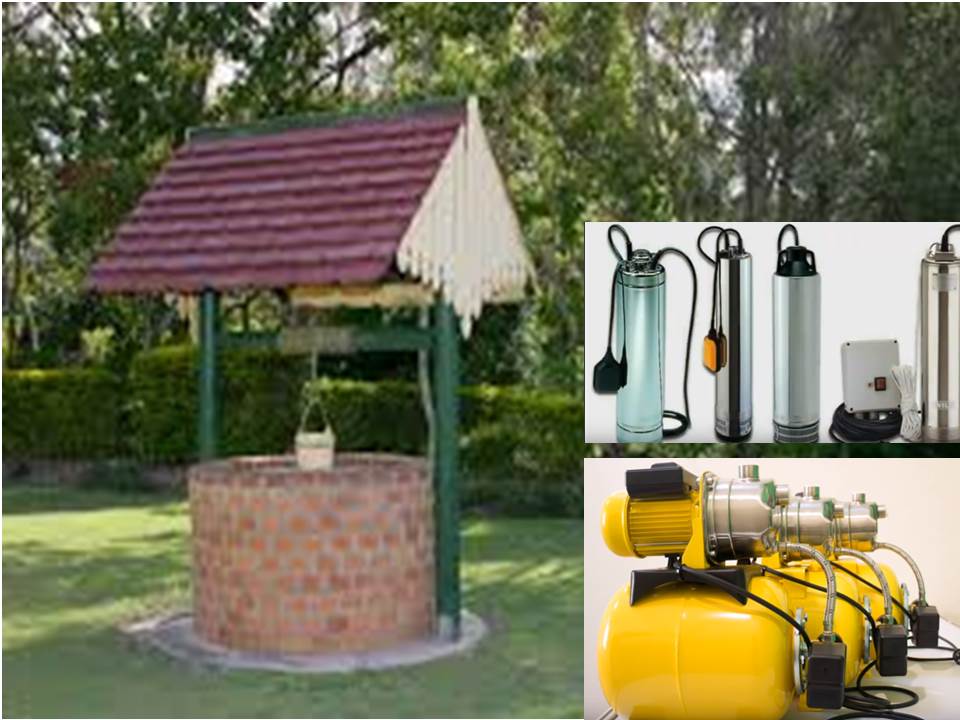In a private house and in a summer cottage, many set themselves the task of building a well, since it is often the only source of water supply. Therefore, special attention is paid to the daily water extraction. Its consumption in everyday life is much more than we can imagine. In addition, in such areas there is a vegetable garden, the watering of which entails a large amount of water. For owners of private houses, it becomes necessary to purchase a pump. Tips for choosing a pump for a well, prepared by the editors of the site "bestx.htgetrid.com/en/" will help you determine which pump is better to buy for servicing a country house, find out about how much popular pump models from the best manufacturers cost, and which companies are included in the rating of quality ...
Content
Types of pumps
There are several types of well pumps. Each type has its own advantages, functionality, application and installation. They are classified according to the main two parameters.
- By sampling source:
- Surface;
- Submersible.
- By the principle of action:
- Vibrating;
- Vortex;
- Water ring;
- Centrifugal.
Let's consider the principle of operation of each type.
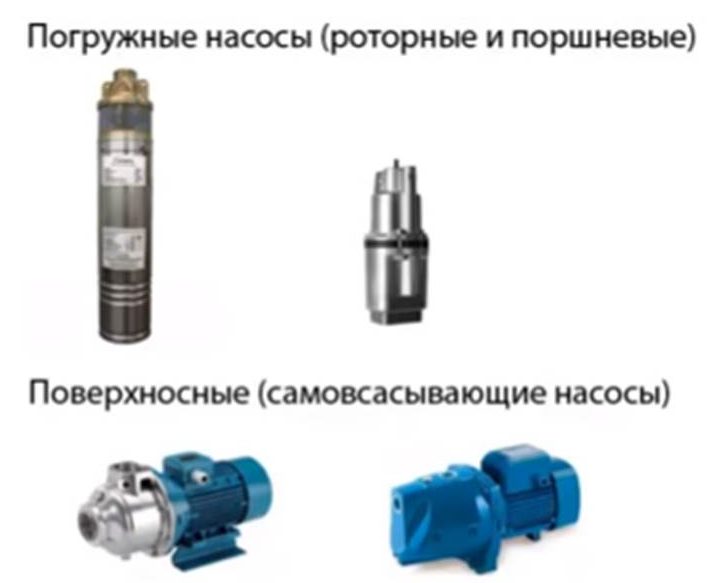
Surface
These pumps are installed above the water level or outside the well. They are not aquatic. The principle of operation requires the use of a hose, one end of which is attached to the unit, and the other is lowered into the water. They are used to lift liquid to a height of no more than 10 meters. It works due to the rarefaction of air, which pushes the liquid to the surface.
Advantages:
- Easy installation;
- Have the opportunity for self-repair;
- Short service life;
- Affordable price.
Disadvantages:
- Part of the power is spent on suction, so the head will be weaker;
- Noises when working;
- Breakdown of the mechanism due to accidental air ingress;
- Small immersion depth.
Submersible
This type of unit is the best choice for a home, a summer residence, a garden and a vegetable garden. They are also called deep. This mechanism is completely or partially submerged in water. They are used to lift liquid to a height of more than 10 meters. In this case, you should consider the following points: the immersion depth of many models should not be more than 7 meters, and the minimum distance from the pump to the bottom is 1 meter. The system works by relying on water pressure supplied from below by means of a liquid. The principle of operation of submersible pumps assumes the presence of a sealed casing, which is made of waterproof polymers or stainless steel. They also have protective functions and insulated wiring. With the help of a submerged unit, you can build a home pumping station.
Advantages:
- Easy installation;
- Works silently;
- Maximum depth of use;
- The mechanism is designed with overheating protection;
- The power consumption creates the maximum head;
- Long service life;
- They have automatic adjustment.
Disadvantages:
- Difficulty in service;
- High price;
- Cannot be used in shallow wells;
- At a distance of less than 1 meter from the bottom, debris may fall into the water.
Vibrating
In this system, the vibrator starts to work from an electromagnet. Next, water is supplied. The piston vibrates 100 times per second. The vibrator has a control valve. It creates a pressure of water in the pipe.
Advantages:
- Inexpensive;
- Easy to use.
Disadvantages:
- Has a low bandwidth;
- Short service life;
- Works at shallow depths.
Vortex
Water supply occurs due to the formation of a vortex, which occurs due to the rotation of the wheel with radially mounted blades.
Advantages:
- Create a lot of pressure;
- Self-priming;
- Not afraid of air ingress.
Disadvantages:
- Designed to be pumped out with clean water;
- Low efficiency;
- The small gap between the blades leads to rapid system wear.
Liquid ring
They are also called vacuum. These units include several gaps through which suction and water rise. The system is designed in such a way that when the wheel rotates, the space between its blades alternately increases and decreases.
Advantages:
- With a small size, they create a good pressure;
- No gearbox installation required;
- Does not require air removal.
Disadvantages:
- Break down quickly when solid particles get inside;
- Big size;
- Low efficiency.
Centrifugal
Liquid is ejected to the surface due to several wheels that are inside the pump and are interconnected by blades. During operation, the distance between them is filled with liquid, the wheel rotates and centrifugal force acts. It increases pressure around the edges and decreases pressure in the center. The difference between the pressure pushes the water out through the outlet.
Advantages:
- Operational reliability;
- Depth of work from 8 meters;
- Works without noise;
- Sufficient power.
Disadvantages:
- When used in a shallow well, sucks up debris from the bottom;
- Expensive for the price.
Criteria for choosing a pump for a well
When purchasing a device, you should rely on several important parameters. With the wrong installation or choosing the wrong model, the system will not last long. To avoid mistakes when choosing, we take into account the following factors under which the pump has to work.
- Performance. You need to know how much the pump can pump water for a set period of time. The performance of the unit also changes from the purpose of use.
- Power (pressure). This indicator affects the water pressure from the source. To calculate the estimated pressure, you need to know the depth of the well and the length of the pipeline.
- Electricity consumption. This moment plays an important role in pump selection. First of all, this is due to saving money on electricity.
- Dynamic and static water level of the well. These are indicators of the volume of water when the pump is on and off. That is, the depth from the surface to the mirror of the water.
- Suction depth. This is the depth of the well from which the fluid is to be lifted.
- Well diameter. It will help you find out the volume of water in it.
- The height of the water column.
- The degree of contamination of the well. Some pumps can only carry out their work in clean sources.
The above criteria must be verified with the technical characteristics of the pump, which are indicated in the attached product passport. The pump performance must match the capabilities of the well. Otherwise, the mechanism will fail.
How to care for well units
Any device needs prophylaxis over time. If this procedure is carried out in a timely manner, then the service life of the pump can be extended for ten years in advance. The well pump is not protected from natural influences.These include dust, dirt, dirty water, leaves, etc. These are all reasons for preventive maintenance of systems.
Signs that indicate an indispensable requirement for maintenance of the mechanism:
- Unpleasant taste and smell of water;
- Changes in water color;
- Incomprehensible noise during operation;
- Deviations from pressure indicators;
- Deviations in the indicators of electrical appliances;
- Plaque on the body;
- Deterioration of dynamic and statistical water level.
Conditions under which the pump will operate
When buying a pump, you need to decide on the conditions for its operation. If the unit is purchased for the purpose of producing only drinking water, then you can buy a conventional model with an average power and a lower level of electricity consumption. If the pump is needed for household services and for watering the garden, then you should opt for powerful models that can work with polluted water.
You also need to consider what time of year the pump will operate. If the device is bought with the expectation of working all year round, then it is necessary to think over its location in advance, in order to avoid damage from adverse weather conditions. If you purchase the product only for the summer season, then such pumps will be more sensitive to water quality and air temperature.
List of the best manufacturers of well units
The quality of the pump purchased depends not only on its technical characteristics, but also on the manufacturer. In the market for these goods, there are more popular firms among buyers. These include:
- Grundfos. This is the most popular foreign brand.
- "Livgidromash". The most popular domestic manufacturer.
- Gardena. The German manufacturer is distinguished by a diverse range of models.
- Pedrollo. One of the largest Italian companies.
- Stream-Technopribor-1. Pumps of this brand are manufactured in Belarus and differ in their quality.
Rating of 10 popular models of pumps for wells
When buying this type of product, the question of how to choose a unit that is not expensive in price and which company is better becomes acute. Even among the best manufacturers, there are both expensive and budget options. They differ in the material used and the functions. We provide an overview of the 10 best pumps according to consumer reviews.
GARDENA 6000/5 Comfort
High pressure submersible pump. Country of origin - Germany. Immersion depth up to 12 m. Engine power: 1050 W. Productivity: 6000 l / h. Head 45 m. Multi-stage suction system (stage 4). Mains voltage: 220V.
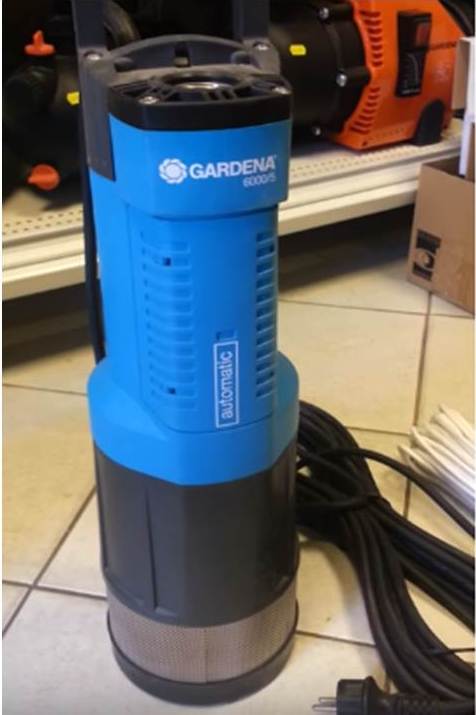
Advantages:
- Electronic water level sensor;
- Protected against overheating;
- Stainless filter;
- A check valve is installed;
- There is a securing cable 15 meters long;
- Double gaskets;
- Convenient to operate;
- Energy saving;
- Lasting;
- Long lasting.
Disadvantages:
- High price - from 23 to 35 thousand rubles;
- Automation can knock out an error when the tap is not completely closed;
- Over time, the check valve may leak;
- The system may shut down unintentionally.
Pedrollo NKm 2/2 - GE

Centrifugal submersible pump made in Italy. Immersion depth: 20 m. Head: 48 m. Mains voltage: from 220 to 230 V. Power: 550 W. Productivity: 4800 l / h. Multi-stage suction system (2nd stage).
Advantages:
- High-quality assembly;
- Resistant to dirty water;
- There is overheating protection;
- Automatic control over the water level (presence of a float);
- Long power cord - 20 m;
- Low power consumption.
Disadvantages:
- High price - from 20 thousand rubles.
Grundfos SBA 3-45 A
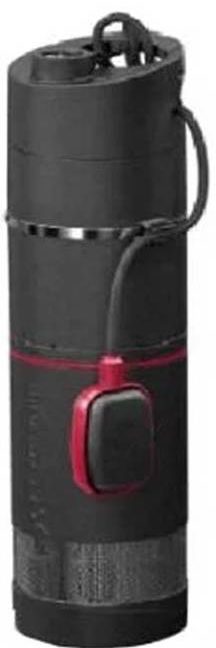
Automated submersible pump of the Danish concern, which is assembled in Italy. Head: 30 m. Motor power: 1050 W. Productivity: 3000 l / h. Immersion depth: up to 10 m. Mains voltage 220V. Single stage suction system.
Advantages:
- Good performance;
- Does not create much noise when working;
- Overheating and dry running protection;
- When the water level is low, the float switch will operate.
Disadvantages:
- Plastic outlet fitting;
- Average price: 19 thousand rubles.
Brook-1M 40 m
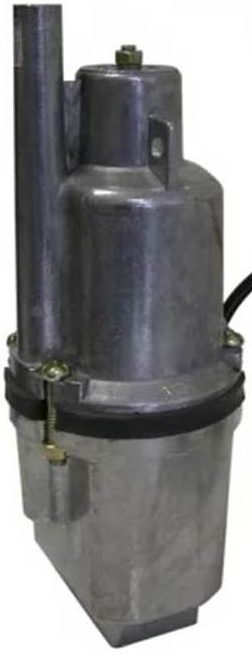
The vibrating submersible pump is manufactured in Belarus. Head: 60 m.Mains voltage: 220 - 230V. Power consumption: 225W. Productivity: 960 l / h.
Advantages:
- There is a thermal sensor;
- Good performance;
- Minimum power consumption;
- Lower water intake;
- Low cost - from 2 thousand rubles.
Disadvantages:
- Strong body vibration.
Hammer NAC 1000A

Centrifugal surface pump manufactured in China. Power: 1000 W. Head: 45 m. Productivity: 4600 l / s. Mains voltage: 220 - 230V. Immersion depth: 8 m. Filtered particle size: 3 mm.
Advantages:
- Multifunctional;
- The presence of an inlet and check valve;
- There is a filter;
- Works quietly;
- High-quality assembly;
- Affordable price - from 6 thousand rubles;
- Long-term guarantee.
Disadvantages:
- There is no protection from dampness and precipitation;
- Short electrical cord 1.2 meters long;
- Suitable for wells with high water flow;
- Not protected against dry running.
Grundfos SB 3-35 M
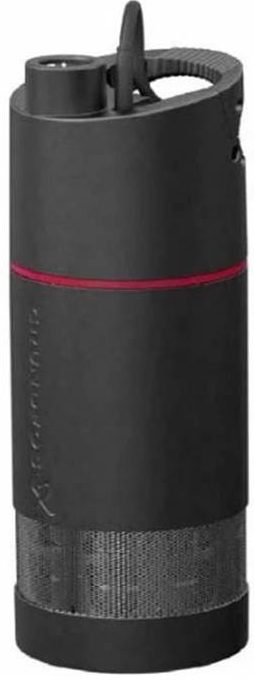
Electric submersible pump. Denmark is the country that produces them. Motor power: 800 W. Productivity: 3000 l / h. Immersion depth: up to 10 m. Head: 35 m. Mains voltage: 220V. Single stage suction system.
Advantages:
- Moderate starting current;
- There is overheating protection.
Disadvantages:
- There is no built-in automation;
- There is no dry run protection;
- High price - from 19 thousand rubles.
DAB DIVERTRON 1200 M

Submersible pump of Italian origin. Power: 750 W. Mains voltage: 220 V. Head: 47 m. Productivity: 5700 l / h. Immersion depth: 10 m. Multi-stage suction system.
Advantages:
- Good automation;
- Electronic control over the water level;
- Dry run protection.
Disadvantages:
- The cable is attached to the plastic handle;
- Sensitive to temperature changes;
- React to power drops;
- High price - from 19 thousand rubles;
- There is a lot of plastic in the unit.
LIVGIDROMASH Malysh BV 0.12-40-U5 16 m
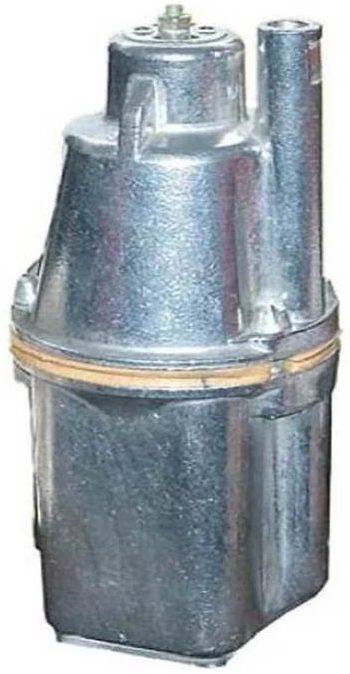
Vibrating submersible pump. The old name is "Stream", and the current name was given at the plant in the city of Livny in the Oryol region of Russia. Productivity: 1500 l / h. Power: 240 W. Immersion depth: 3 m. Head 40 m. Mains voltage 220 - 230 V.
Advantages:
- Good performance despite low power consumption;
- When horizontal, it pumps water over long distances;
- Resistant to impurities;
- Easy to maintain;
- Low cost - about 2 thousand rubles.
Disadvantages:
- Vibrates strongly during operation;
- There is no water level monitoring sensor;
- There is no thermal protection.
GARDENA 5500/5 Inox Premium
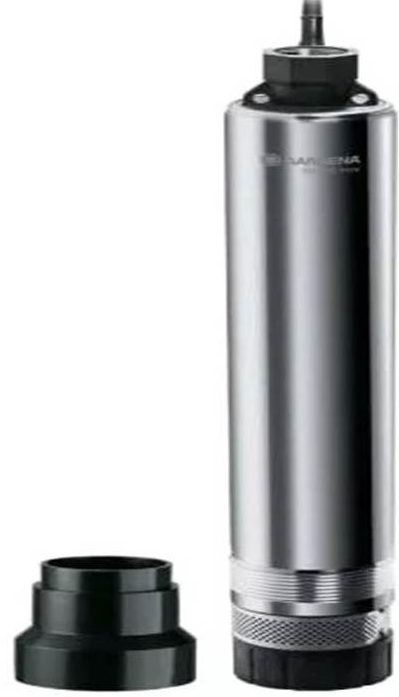
The centrifugal submersible pump is assembled in China. Immersion depth: 20 m. Head: 45 m. Mains voltage: 220 - 230 V. Power: 850 W. Productivity 5500 l / h.
Advantages:
- Good head when deep diving;
- Made of high quality stainless steel;
- Does not cause problems during operation;
- Automatic water level control.
Disadvantages:
- Poor level of engine protection;
- Dry-running protection must be installed independently;
- High cost - from 19 thousand rubles.
UNIPUMP BAVLENETS 2 BV-024-40-U5
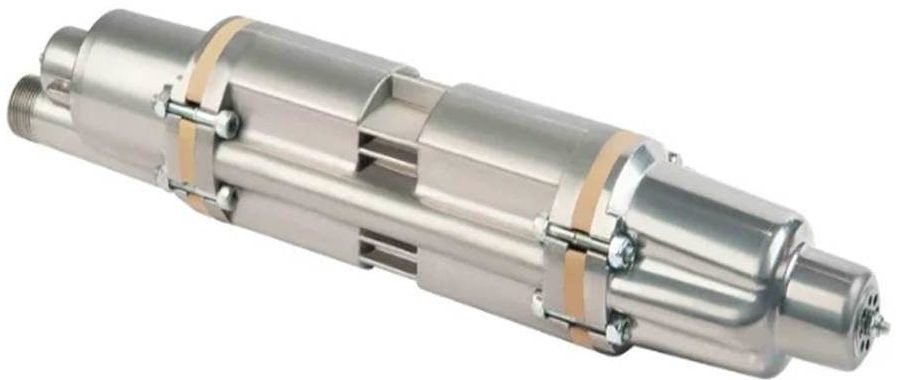
Vibrating submersible pump. Manufactured in Russia. Immersion depth: 6 m. Head: 40 m. Productivity: 2000 l / h. Mains voltage: 220 - 230 V. Power: 490 W.
Advantages:
- Has an upper and lower water intake;
- Good performance;
- When air enters the upper section, the pump is turned off;
- Affordable price - from 4 thousand rubles.
Disadvantages:
- Strong vibration when working.
Guided by the description in this article, you can easily choose a suitable pump for a country house or private sector, which has a well. It must be remembered that over-saving can cost twice as much.

